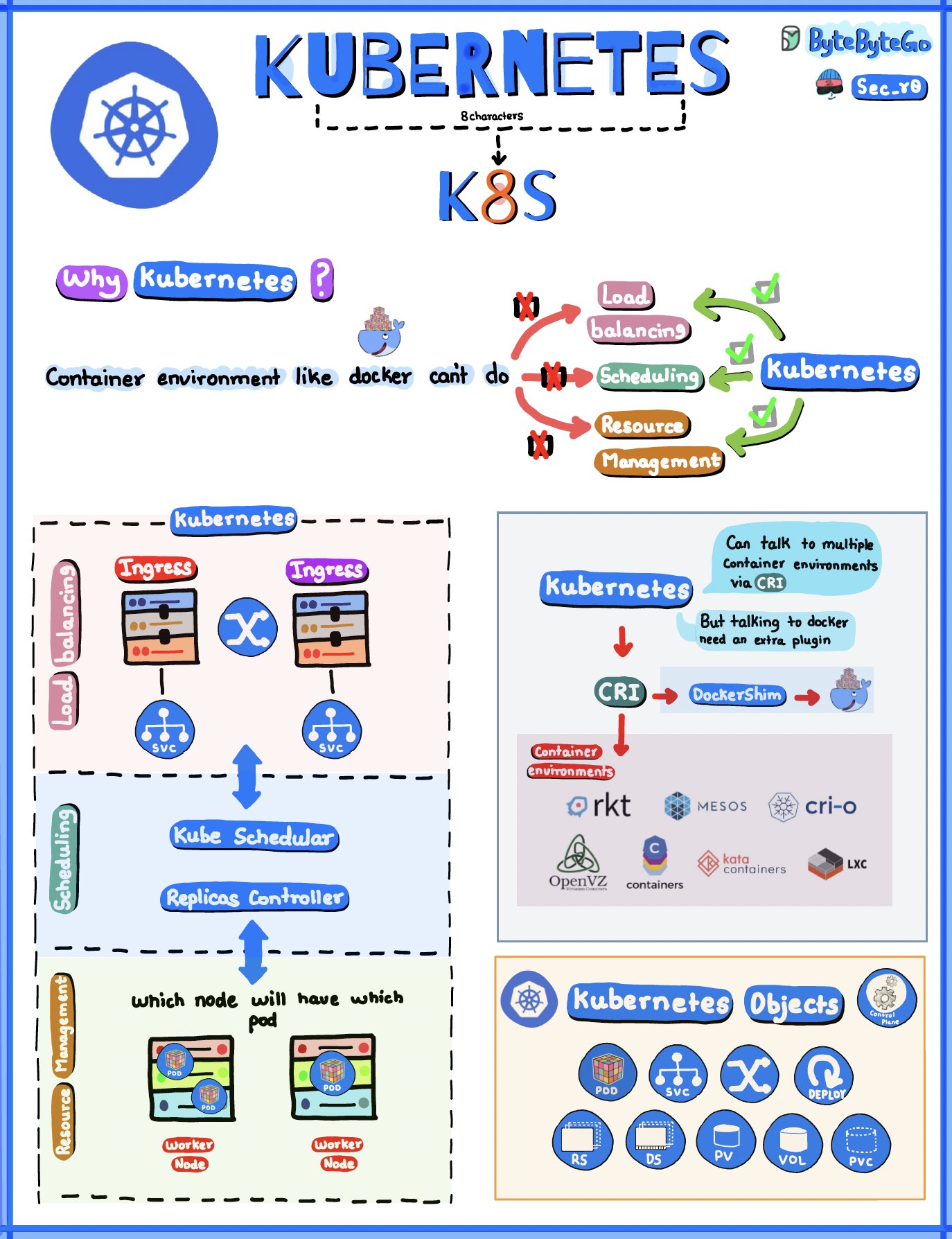A Brief Overview of Kubernetes
Kubernetes, often referred to as K8S, extends far beyond simple container orchestration. It's an open-source platform designed to automate deploying, scaling, and operating application containers.
首頁 / ByteByteGo
Diagram

Where Docker Lags, Kubernetes Excels
Where Docker Lags, Kubernetes Excels Docker revolutionized containerization, making it accessible and standardized. However, when it comes to managing a large number of containers across different servers, Docker can fall short. Kubernetes steps in here, providing a more robust, cluster-based environment for managing containerized applications at scale. It offers high availability, load balancing, and a self-healing mechanism, ensuring applications are always operational and efficiently distributed.
Solving the Container Management Puzzle
The primary problem Kubernetes solves is the complexity of managing multiple containers across various servers. It automates the distribution and scheduling of containers on a cluster, handles scaling requirements, and ensures a consistent environment across development, testing, and production.
Kubernetes' Container Runtime Interface (CRI) is a significant leap forward, enabling users to plug in different container runtimes without recompiling Kubernetes. This flexibility means organizations can choose from a variety of runtimes like Docker, containerd, CRI-O, and others, depending on their specific needs.
 北京
友邦天地
北京
友邦天地